I spent the last Eid el-Fitr holidays in Aden last July. It may appear weird to spend holidays in your work assignment place, but there were professional reasons for that. Anyway, I liked the experience as I discovered Aden under a peculiar and festive light.
Crater
To appreciate this special Aden, you should be introduced to the everyday Aden. First, let’s take a bird view. The historical centre of the town is named Crater. For a good reason, since it is built in the crater of a volcano.

I struggled in vain to clarify whether the Aden volcano is dormant or extinct. A volcano is extinct when it has not erupted in the past 10,000 years and is not likely to do so in the future. In turn, a dormant volcano could awaken in the future. For some sources consulted, Aden volcano is dormant while for others, it is extinct.
Fore sure, Aden stays at the crossroad of a complex underwater interplay of tectonic plates through the Gulf of Aden and the Red Sea and extending south to the East Africa Rift. Overall, the tectonic system is active indeed.
Antique Aden
In any case, human beings have settled in Aden long ago, lured by its natural harbour. Called Front Bay, the port is located in the volcanic crater and forms a peninsula connected to the mainland by an isthmus.
During the Antiquity, Aden harbour developed into a key commercial hub of southern part of the Arabian Peninsula. It was used by the Awsan Kingdom – one of the most important kingdoms of South Arabia at that time.
Hajar Yahirr, large and prosperous capital of Awsan, was located hundreds kilometres away from Aden in today’s northern Shabwah governorate. As elsewhere in the Arabian Peninsula, camels facilitated the overland transit of people and goods between Aden and Hajar Yahirr.
Modern Aden
Aden has grown over time to host nowadays some one million people. Its strategic location at the southeast edge of the Arabian Peninsula has been its main asset throughout the modernity.
Beside the islamisation of Yemen in the 7th century, the international sea trade through the Red Sea and Gulf of Aden enriches Aden with multiple cultural influences from the Middle East, Asia and Africa. From Europe as well: Portugal to some extent in the 15th century; Great Britain more significantly between 1838 and 1967; USSR during the socialist Republic of South Yemen (1967-1990).
Therefore, Aden’s contemporary population is ethnically and culturally quite diverse. Its overarching culture is profoundly Muslim, but also particularly open and tolerant. In Aden live peacefully followers of various Islamic schools of thought, as well as non-Muslim minorities. Economically speaking, Aden has enjoyed better days in a country ranking nowadays amongst the poorest of the Middle East. Fortunately, the difficult economic situation does not prevent Eid el-Fitr celebration.
Eid el-Fitr
Eid el-Fitr festival marks the end of the fasting month of Ramadan for Muslims. After a month of fasting and other noble spiritual exercises, people feel like rejoicing and enjoying material and entertainment life. However, Muslims are bound also to demonstrate their kindness and generosity in the spirit of Eid. On that day, food donations to poor people, shared gifts and meals with neighbours, cross-visits to relatives are the usual expressions of the Muslim values of compassion, generosity and community. All this happens in Aden as well indeed.
Eid el-Fitr celebrations in Yemen are marked by a variety of local customs, all performed in public by men: traditional dancing in Sana’a; poetic competition in Shabwah; traditional singing in Dhamar; comedy play of a jealous husband in Ibb; parody of a judicial court in Al Dhale; fire gun show-off in Al Jawf, gun shooting competition in Taiz, ash fireballs in Al Baida, camel jumping in Hodeida – just to name a few of those traditions. Female henna body painting is also very typical of Eid festival, particularly in Lahj.
Eid in Aden
And what about Aden? The city has no particular local custom related to Eid. In turn, expect many tourists from all over Yemen and neighbouring countries, I am told ahead of the celebration closing the Ramadan period.
During last Eid holidays, the streets of Aden are effectively packed with the vehicles and pedestrians, due to the incoming flow of tourists. I face my first serious traffic go-slow since my arrival in Yemen last January. Hotel accommodation and food prices surge accordingly.
More importantly, Aden perspires a special atmosphere. In fact, I soon discover that the city cultivates its local brand of Eid celebration that I enjoy for several days in a row. Central areas of Crater district are left to a vibrant carrousel of camel carts and motor squads.
In Aden, motor squads can be considered as a modern and noisy iteration of the traditional and discrete camels. Hired for an hour or more by teenagers, they take possession of some sections of Crater where gravel has been spilled over on the asphalt. What a noisy, messy, rocky and dusty rodeo drive there!
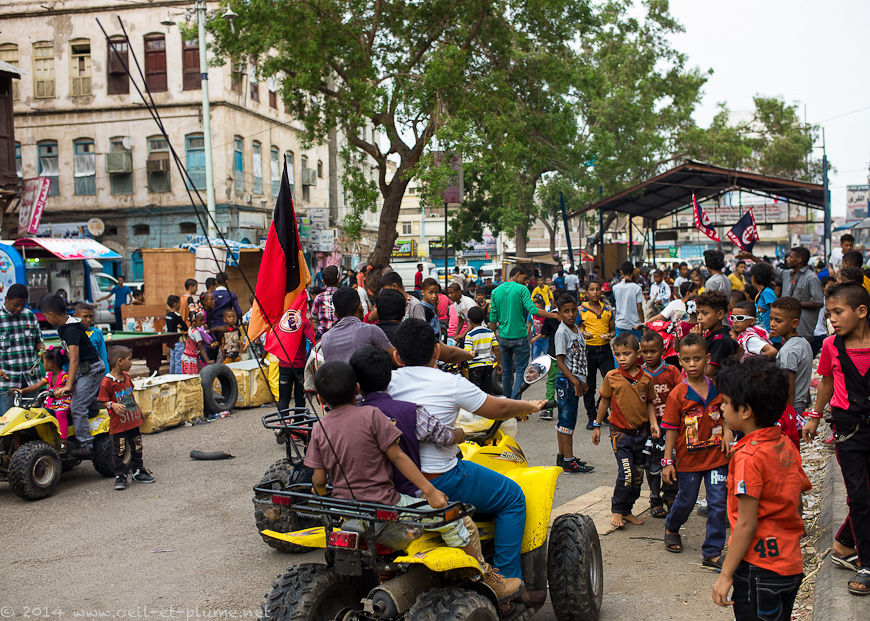
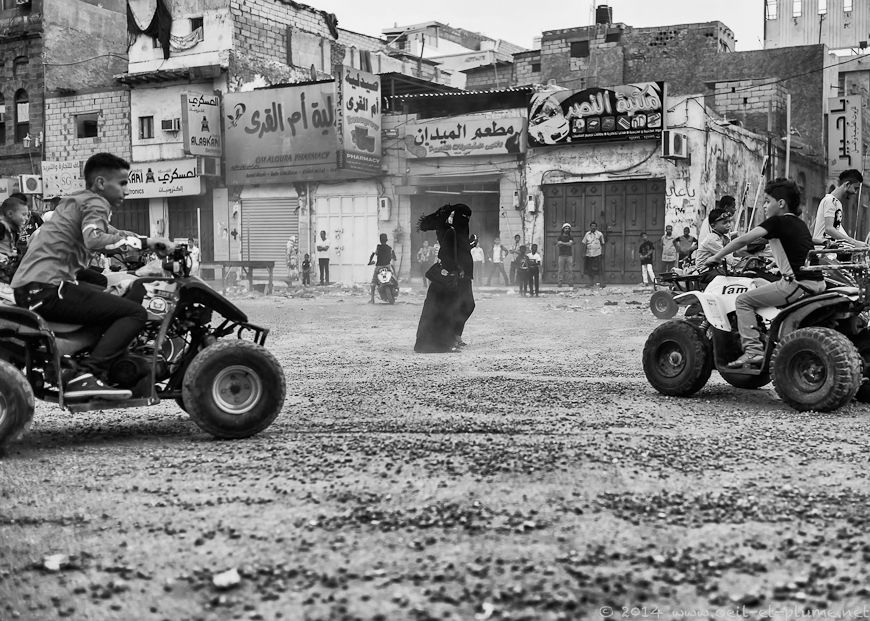
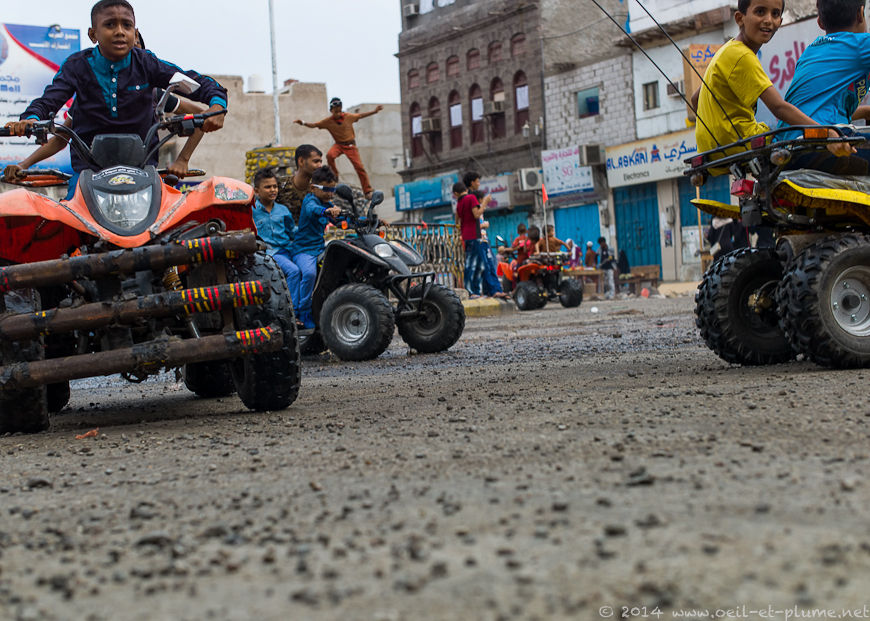
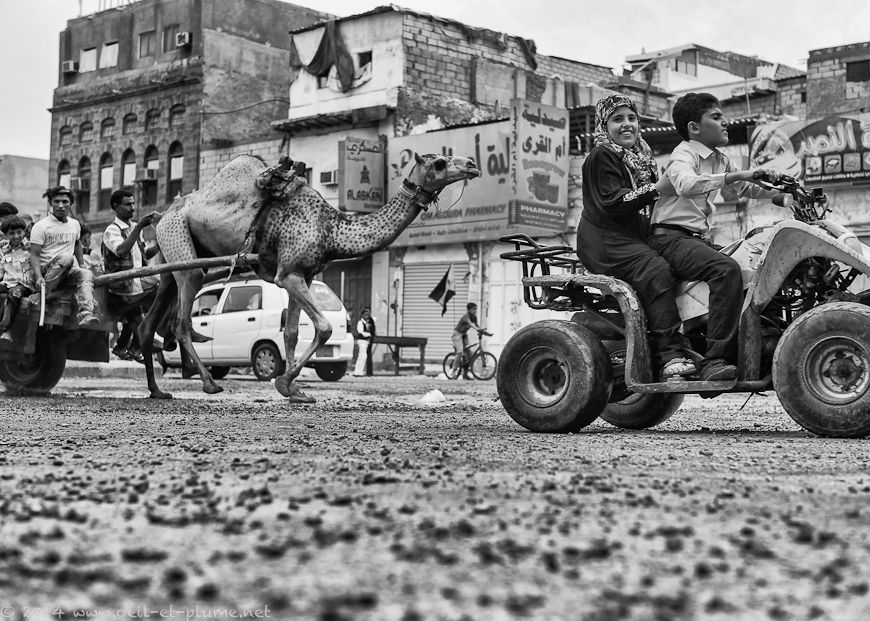
Intrepid teenagers compete to achieve the most impressive glides on the gravel, hitting sometimes other vehicles. The heated words exchanged in those instances do not harm the overall festive atmosphere. The rare pedestrians lost in the road traffic turmoil soon realise their misfortune and leave promptly the scene. On my part, I love the unexpected and unregulated mix of motor squads and camel carts.
A few decades ago, camels were widely used in the flourishing salt production business run on the sea shore of Aden. Camel carts were common in Crater district until recent times, used for local transportation of heavy goods such as construction materials. The limited width of the carriage fits particularly the narrow streets of the historical quarter of Aden.
Nowadays, camels are raised mostly in Aden’s rural surroundings for their milk. During Eid, they are gathered with their carriage near Crater to tour children around the market area. They add a beautifully outdated touch to the festive mood of the younger generations, so proud anyway to exhibit their brand-new outfits and accessories.
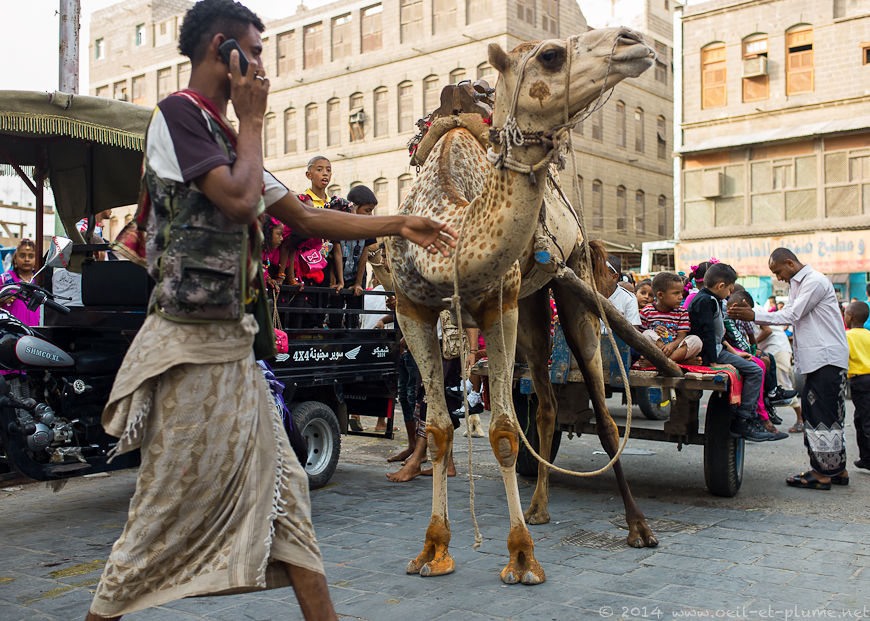
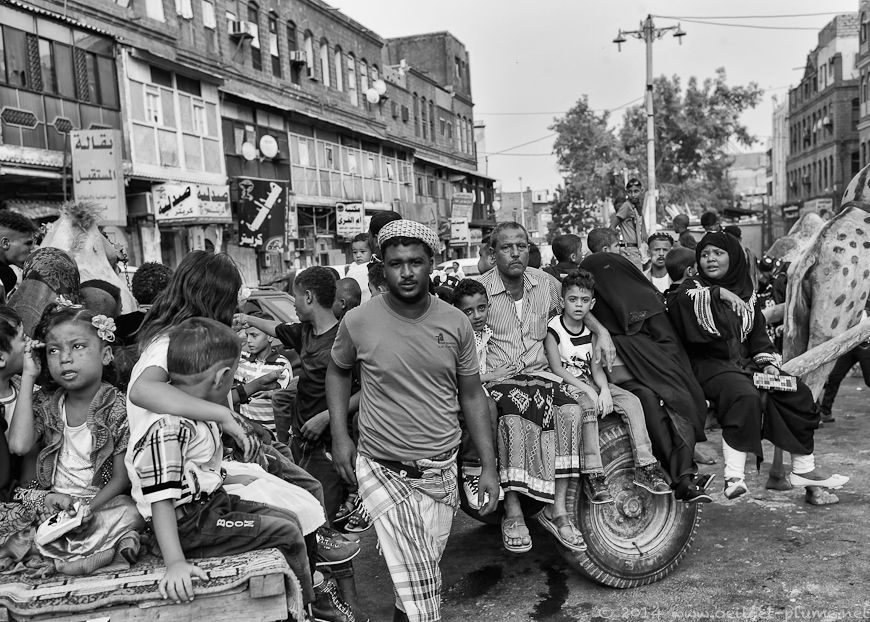
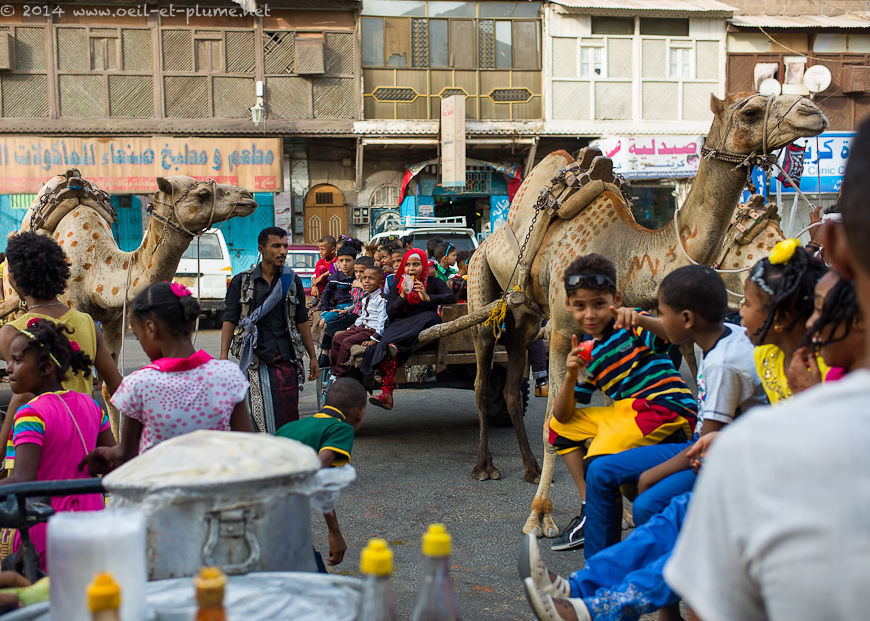
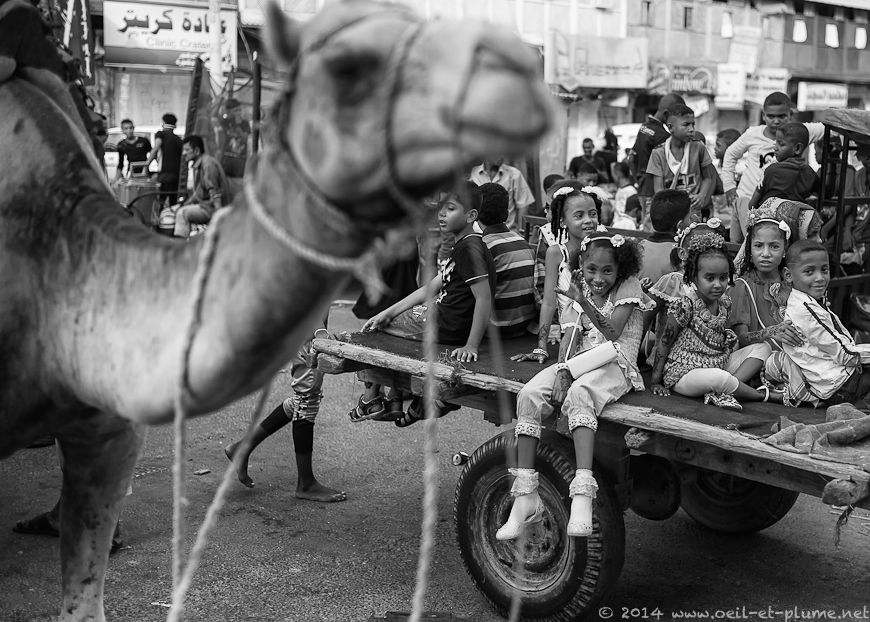
My camera is fascinated by the joyful and colourful symphony; it hesitates between this and that, shifts from here to there, turns around and around, moves back and forth, shoots, shoots and shoots…
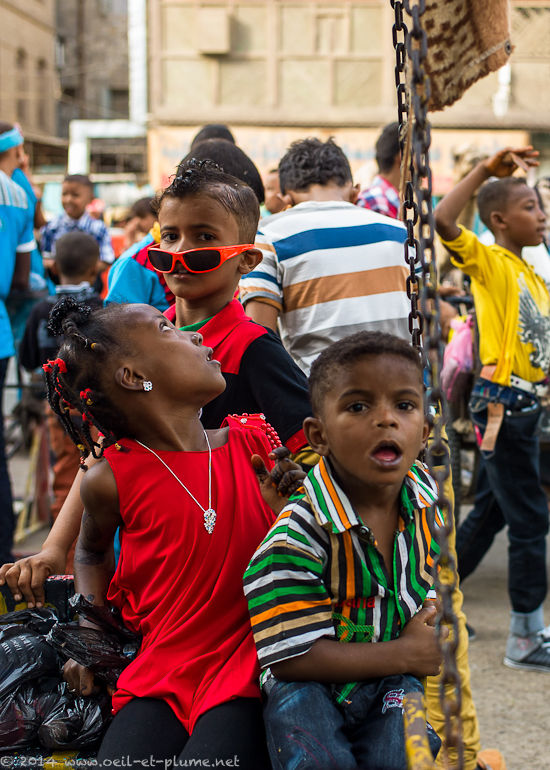
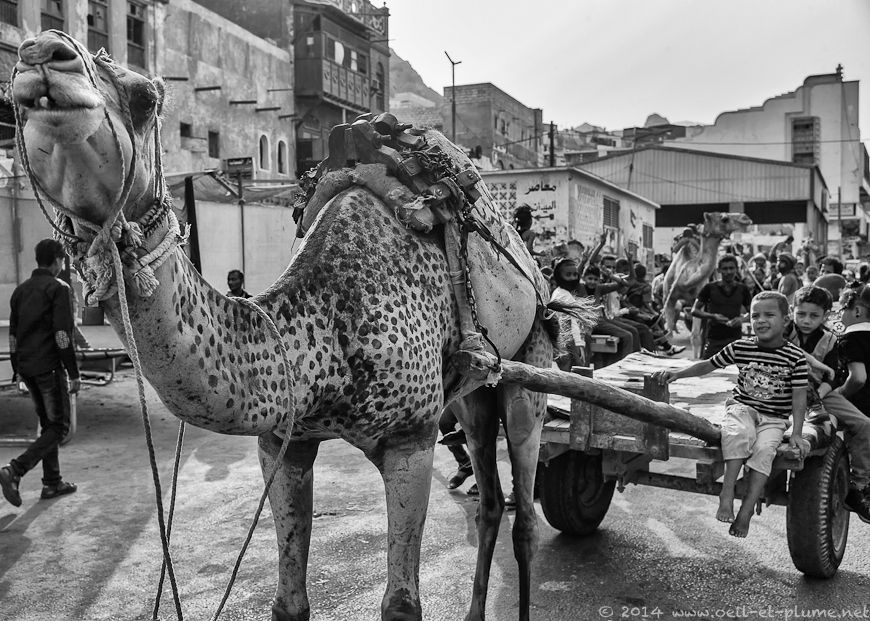
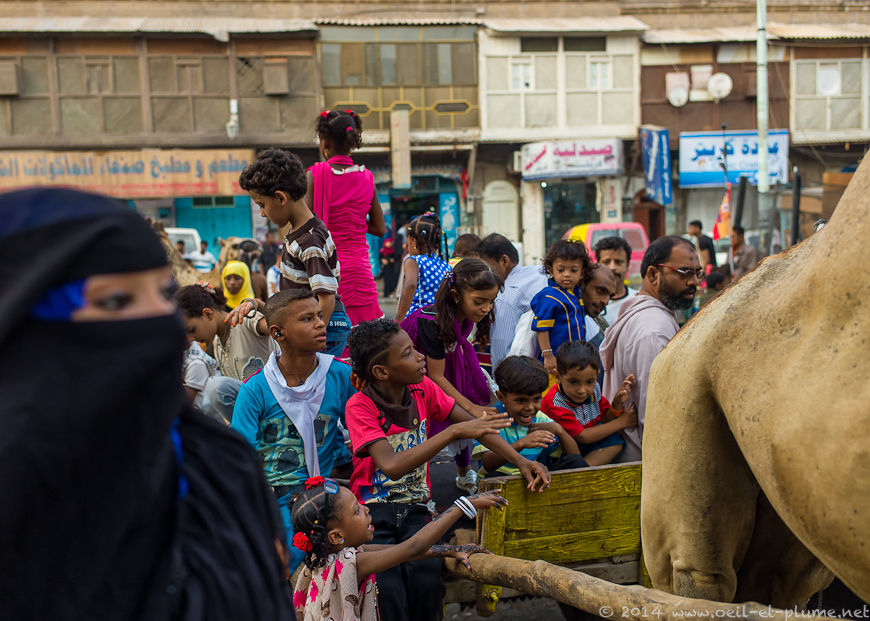
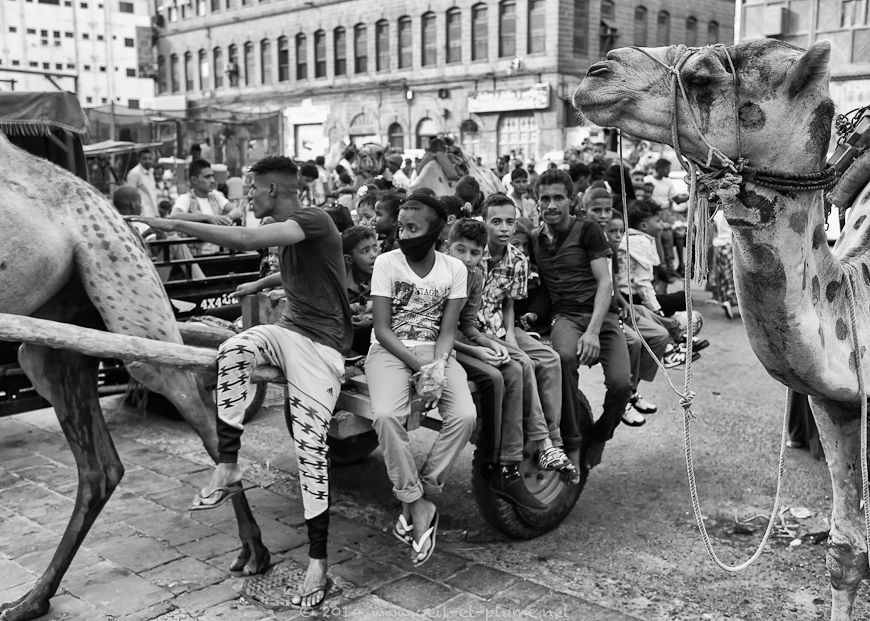

Despite my photographic fury, I am keen to elect my favourite camel cart driver. Here he is, bravely and elegantly standing on the wooden poles of his carriage. He chants a proud mantra: ‘I am the best camel driver in town’, echoed by his young passengers. Yes, you are the best!
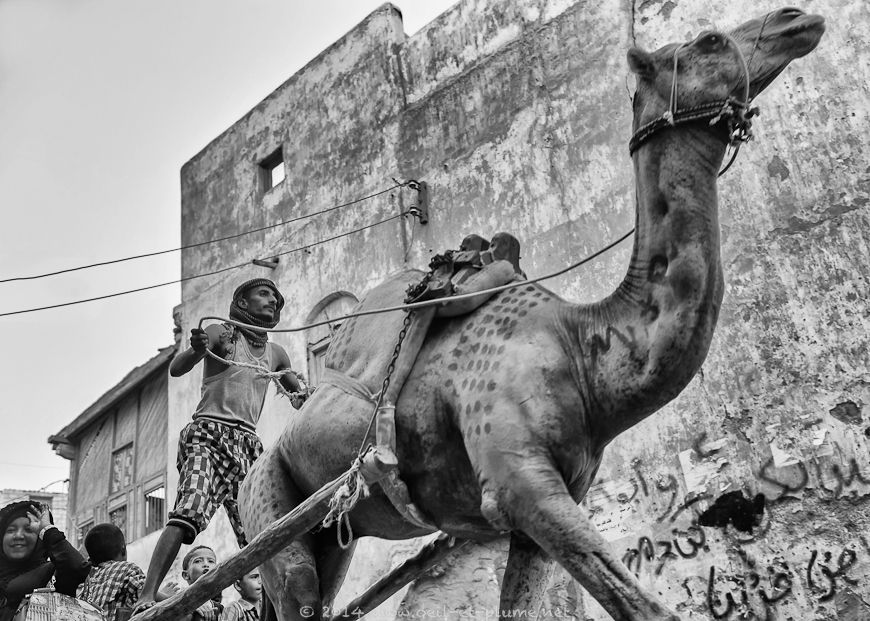
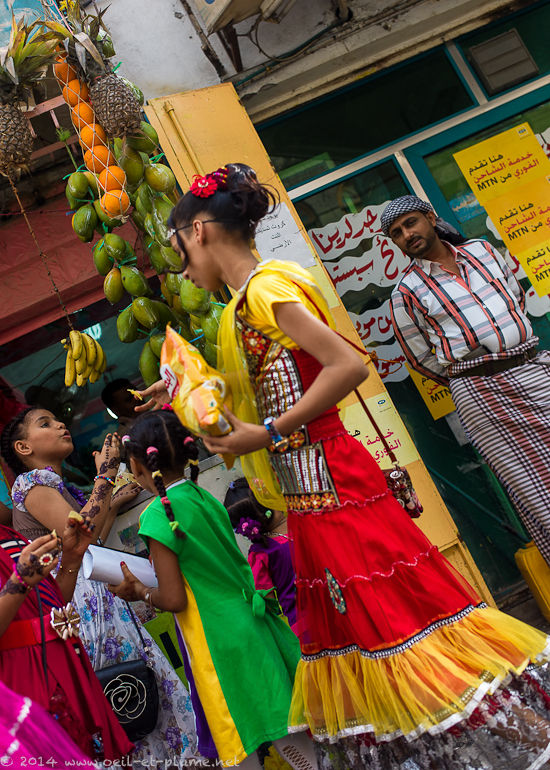
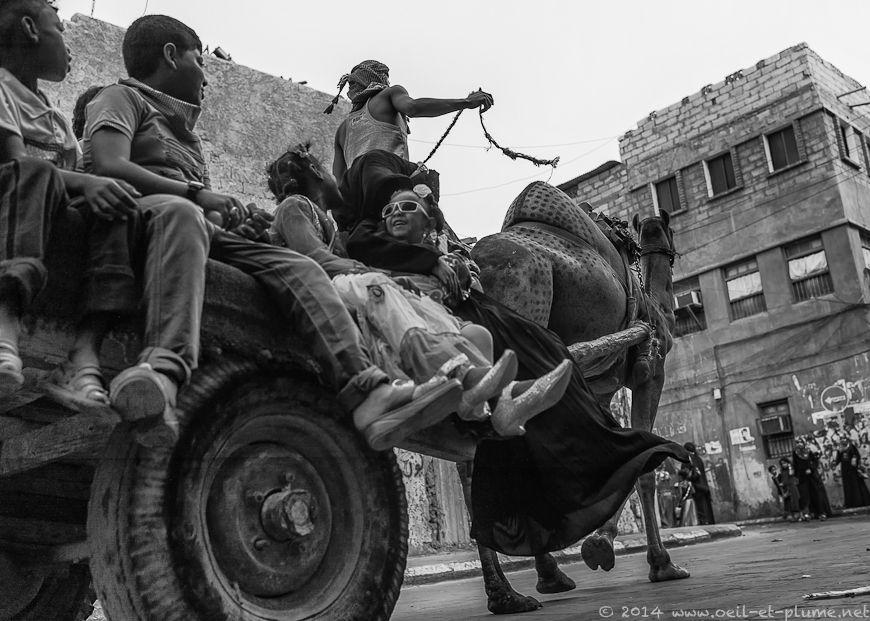
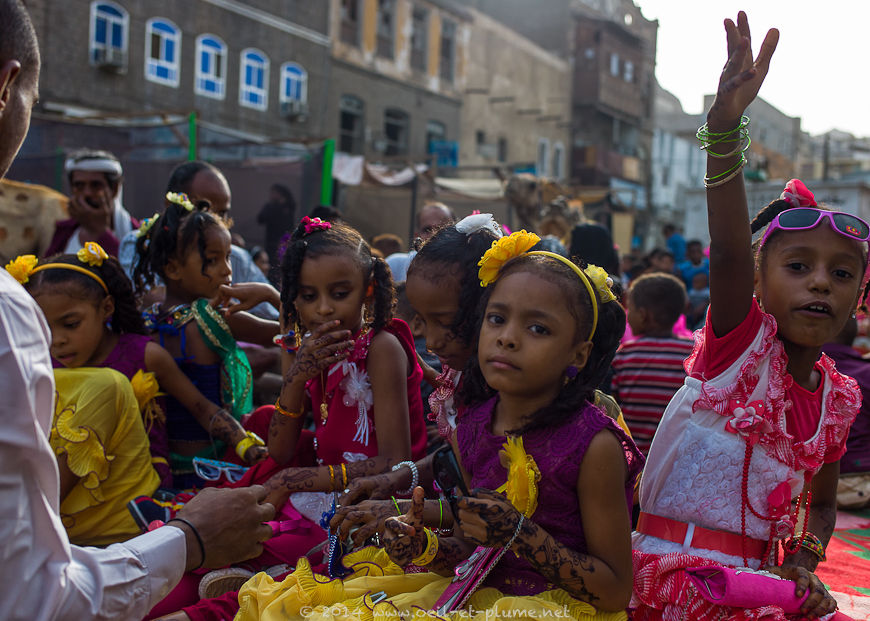
Trampolines installed nearby the improvised camel station provide more discrete venues for children to celebrate Eid. hrough their net, they offer vivid photographic opportunities that I enjoy much seizing.

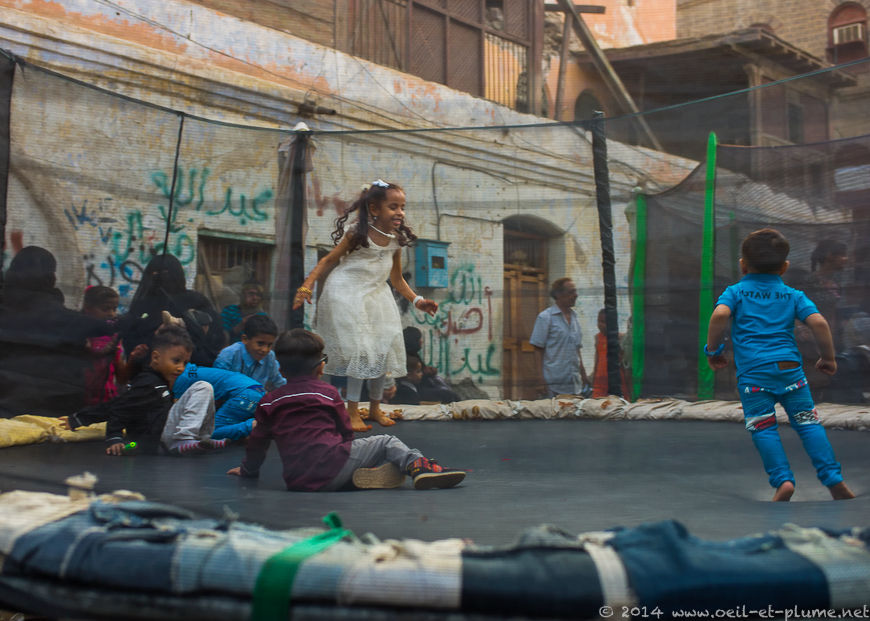
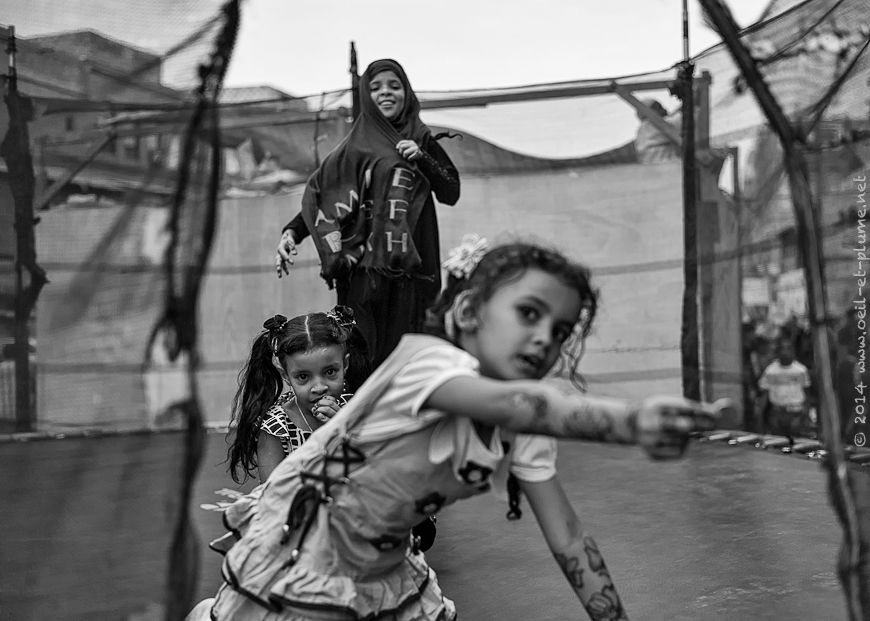
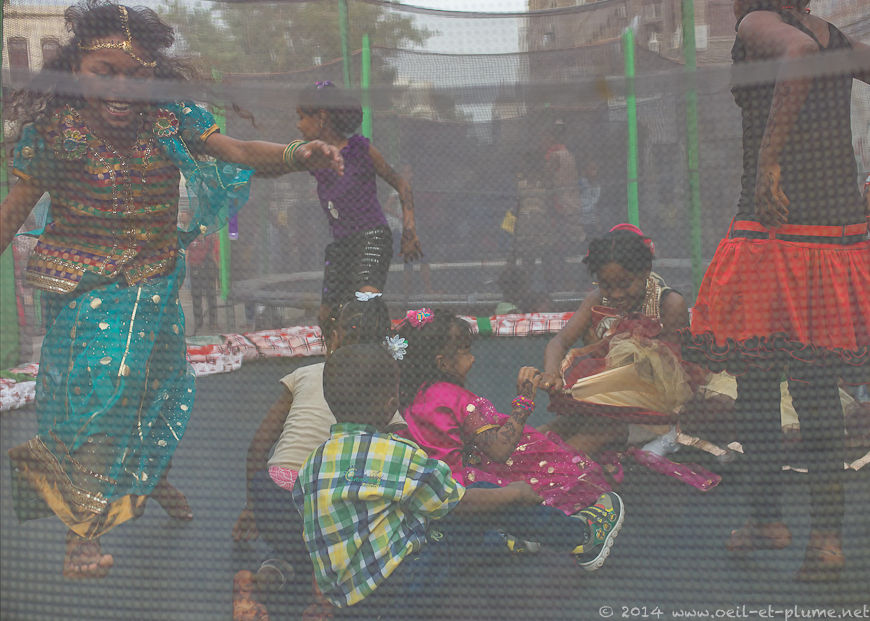
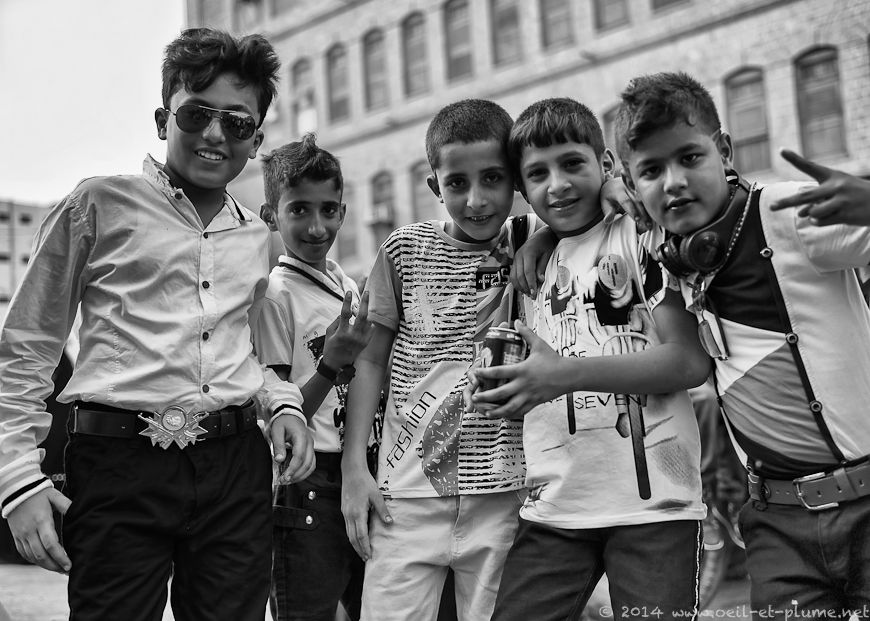
Eid el-Fitr celebration fortunately includes adults as well. Adenis are fond of scented flowers plaited in generous garlands to adorn and perfume bodies, flats and cars. Males keep snooker tables very busy. Snooker tables are very common in town, including in open public spaces. Even improvised casino roulettes lure openly potential customers in the market area.

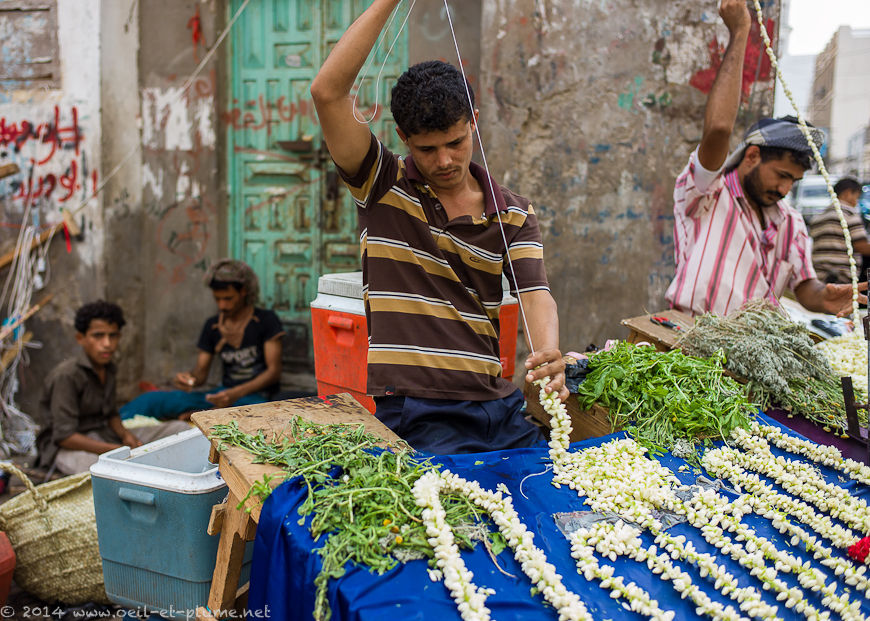

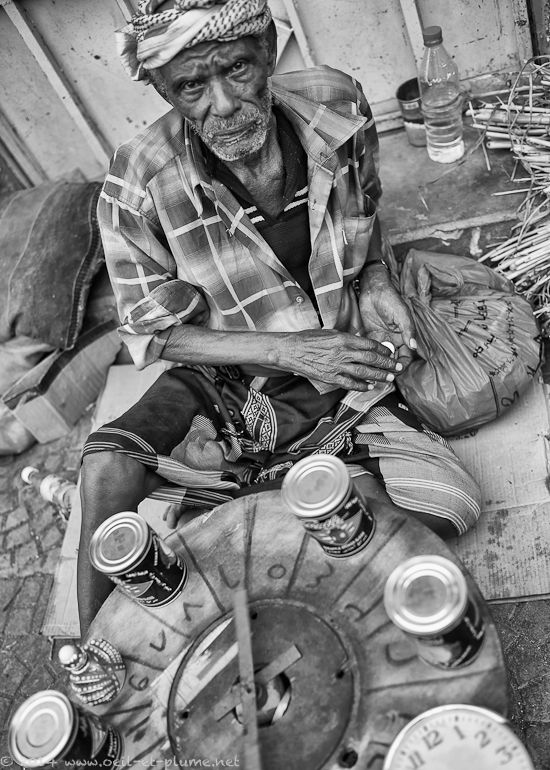
Qat chewing constitutes another typically male leisure activity in Aden. As snooker, it is not specific to Eid period, but probably more widely practiced than in normal times. Thus, the qat market in Crater remains crowed throughout the Eid period.

Qat chewing is anyway a strong social custom throughout the Arabian Peninsula since thousands of years. Its fresh leaves are chewed to reach a state of stimulation and euphoria.
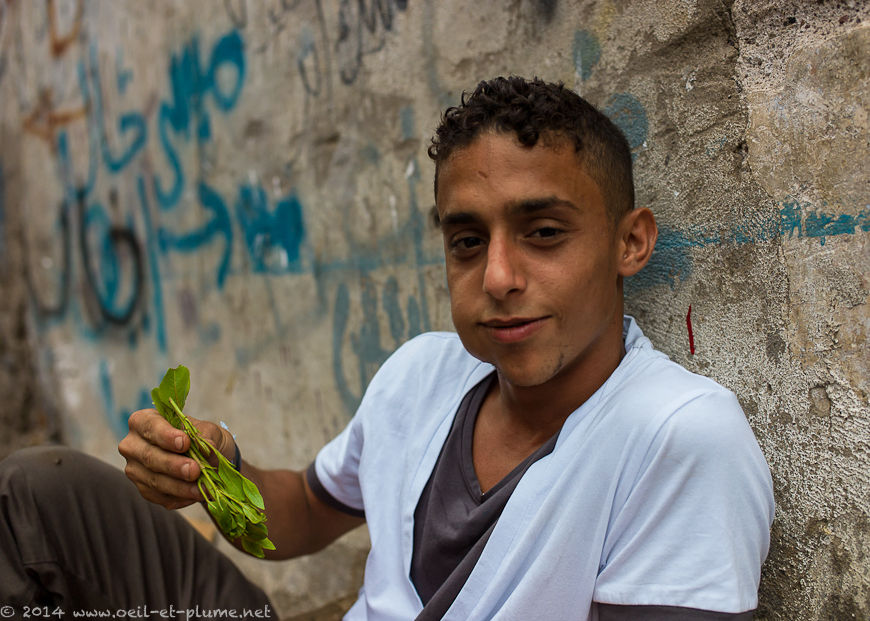
Qat advocates stress that 20% of Yemen’s workforce rely on qat farming for their living and that the crop generates 16% of the country’s gross national product. According to them, qat chewing fuels social harmony among Yemenis.
Opponents of qat flag the negative impact of the drug on public health. They further remind that qat farming overuses pesticides and severely depletes Yemen’s scarce water resources. Moreover, qat chewers tend to spoil family welfare by reducing resources available for food and other essential expenditures.
I leave it to you to conclude on the matter. On my side, my photographic interest is more directed at the narghile. It is often used in Aden in complement to qat chewing. I love the ceremonial implied by the narghile, from the charcoal preparation to the tobacco filling enriched with various flavours.

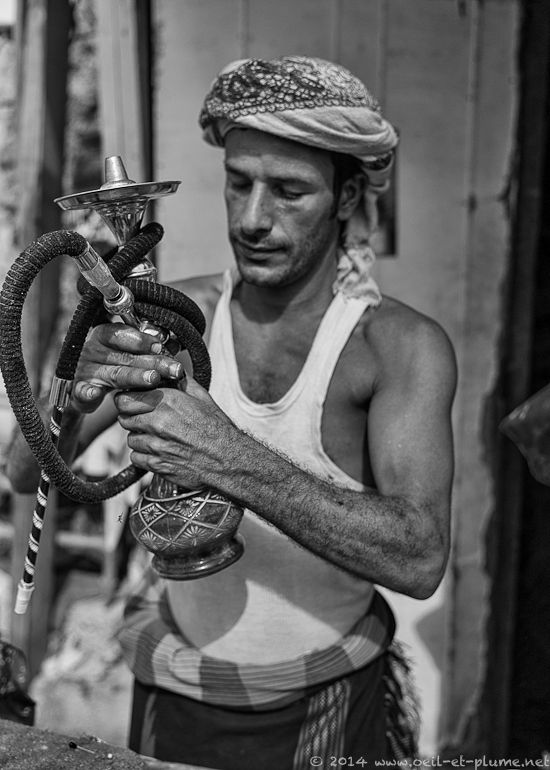

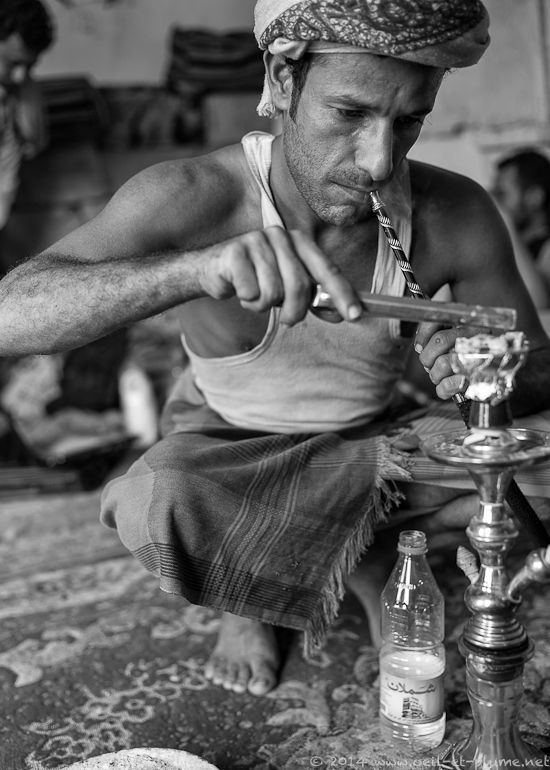

So have been my Eid holidays in Aden. What about yours?
Cheers,